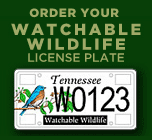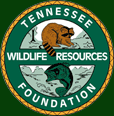|
|
Critter of the Month
Critter of the Month - Yellow-Throated Warbler Setophaga dominica
The Yellow-throated warbler is a well named neotropical migrant of the southeastern United States and here in Tennessee. Often found high in the canopy of the forest it loves to show off it's bright yellow throat and can be found hopping along branches probing for insects among the leaves. Complimenting its vivid yellow throat is a lovely gray and black body and a white triangle below the eye. Yellow-throated warblers are insectavores, eating beetles, caterpillars, flies and scale insects. When on their wintering grounds they are attracted to agave and coconut palm flowers as well. Yellow-throated warblers nest in the canopy of mature trees. Placing nests near the edges of the branches. Here in Tennessee a favorite tree is the sycamore. In fact, 'Sycamore Warbler' is an old fashion term once used to identify these birds. Go out and listen for the 'seet' call or the sweet series of 6-10 whistled notes of their song.
|

















